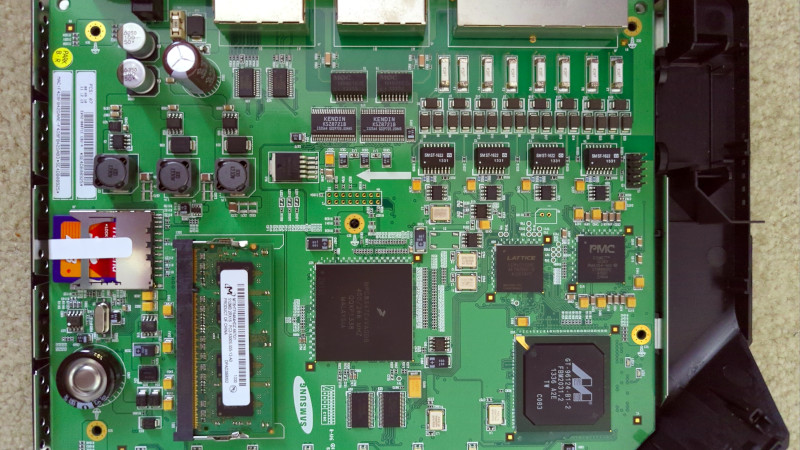When it comes to internet connections, here in 2022 so many of us have it easy. Our ISP provides us with a fibre, cable, or DSL line, and we just plug in and go. It’s become ubiquitous to the extent that many customers no longer use the analogue phone line that’s so often part of the package. But before there was easy access to DSL there were leased lines, and it’s one of these that [Old VCR] is dissecting. The line in question is a T1 connection good for 1.536 Mbit/s and installed at great cost in the days before his cable provider offered reliable service, but over a decade later is now surplus to requirements. The ISP didn’t ask for their router back, so what else to do but give it the hacking treatment?
In a lengthy blog post, he takes us through the details of what a T1 line is and how it’s installed using two copper lines, before diving into the router itself. It’s an obsolete Samsung device, and as he examined the chips he found not the MIPS or ARM processors we’d expect from domestic gear of the period, but a PowerPC SoC from Freescale. Connecting to the serial port reveals it as running SNOS, or Samsung Network Operating System from an SD card, and some experimentation finds a default password reset procedure through the bootloader commands. The rest of the piece is dedicated to exploring this OS.
There was a time before the advent of the Raspberry Pi and similar cheap Linux-capable boards, that hacking a router was the way to get a cheap embedded Linux system, but now it’s much more done to liberate a router from the clutches of manufacturer and telco. Still, it’s very much still part of the common fare here at Hackaday.

















I like that during bootup it says it’s an evil_empire_T1_router
Ah. Nice to see the old PMC-Sierra Quad E1/T1 design again :-)
1.5 meg/bit.
That be thrice the speed of our current crappy inter-garbage connection in semi-outback australia.
Oh Lord, are you poor souls still on dialup? Are modems even still a thing?
Semi-outback? I live in Canberra (that’s our capital!) and still can’t get proper broadband. Doubly so if it rains. When the revolution comes, Abbott and Turnbull will be first against the wall. Those clowns set the country back by decades.
Hey Jenny, always really liked your articles and remember your story about how you got into science from your Dad. *thumbs up*
I had a cow-orker who did T1 design and the moved on to ISDN. We had a T1 at my last company, before we got Comcast Business. The monthly charge for a full 1.544Mbit T1 line was in the high hundreds or maybe over $1k. A month!
I concur, our T-1 lines were $1K per month.
The Fractional T-1 lines we leased were not much cheaper.
I like that he ended up with a free computer!
Being from the generation that grew up with 8-bit micros and assembly language programming, a free computer capable (maybe) of running Linux is pretty cool.
Hey don’t you be touching my Switched 56 DSO on that T1! ;-)
“Our ISP provides us with a fibre, cable, or DSL line, and we just plug in and go.”
I wish. Phone call in the very least.
We are living in an embarrassment of abundant technology resources raised on the shoulders of those who have gone before us. I remember not too long ago that reliable PTP satellite data links used the T1 or E1 channelized TDM format and cost $20,000+ per month.
It’s kind of funny to read this, while using a 1gbps synchronous fibre connection, with a static IP and no bandwidth cap, at a cost of $60 CAD / mo…